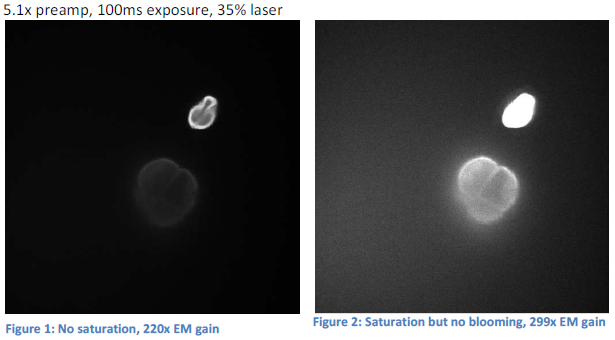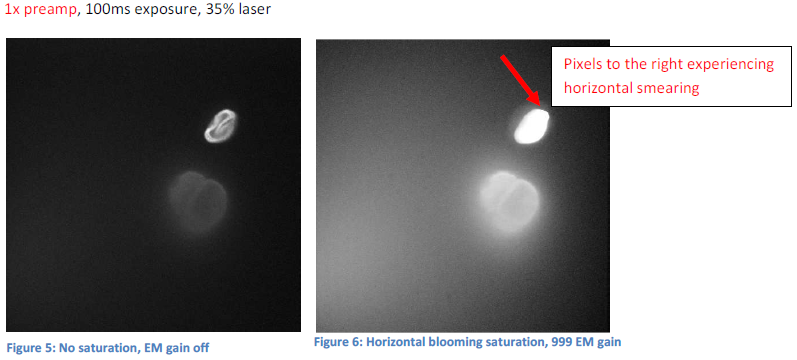Types of saturation
There are 3 places at which you can saturate EMCCD data:
- Analog-to-Digital (A2D) convertor
- Pixel electron wells on sensor
- EM register on sensor
To demonstrate all 3 conditions, the following specimens were imaged with a 60x objective using a Confocal spinning disk and 488nm laser:
- Mixed pollen grains
- Fluorescent pin holes (i.e. green uniformity fluorescent slide with stopped Nipkow disk)
Condition 1: A2D convertor saturated, no blooming
Condition 2: pixel wells saturated, vertical blooming
Condition 3: EM register saturated, horizontal blooming
Conclusion
When using EM gain avoid using less than the highest pre-amp [1], but if you need it, use a low value equal to the readout noise of the speed selected.
References
-
iXon3 Hardware Guide v1.5, pg 36:
…it is only ever recommended selecting something other than the default highest PreAmp (most sensitive) setting for applications that are extremely challenged by dynamic range concerns. It is very important, however, that for such high-dynamic range applications, the user applies even more care to the amount of EM gain applied (high EM gain can drastically reduce the true dynamic range of the camera). Ideally, for maximum dynamic range whilst maintaining improved Signal to Noise (S/N), the EM gain setting should be set equal to the read noise at the readout speed selected (value obtainable from the performance sheet that comes with the delivered system).
Discussion page for Camera_saturation_conditions imported from old wiki


